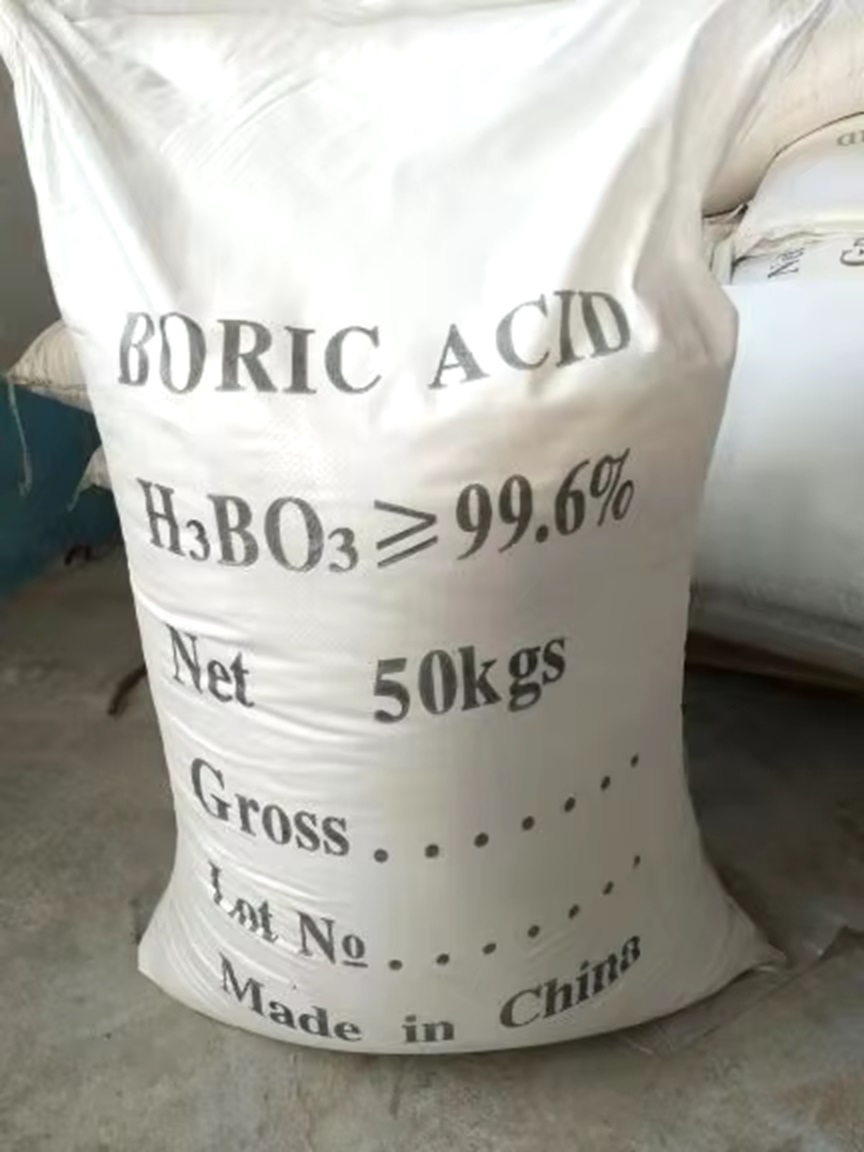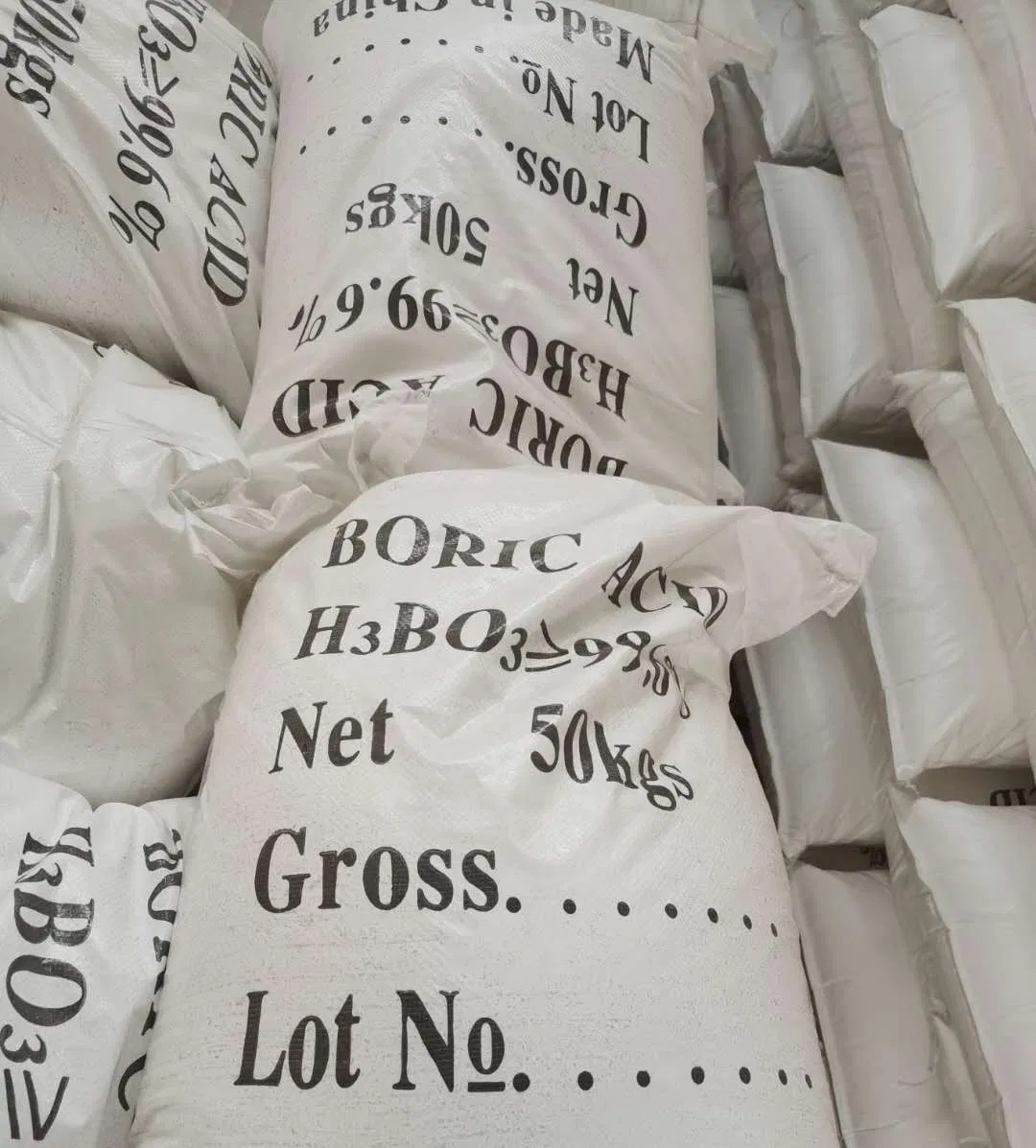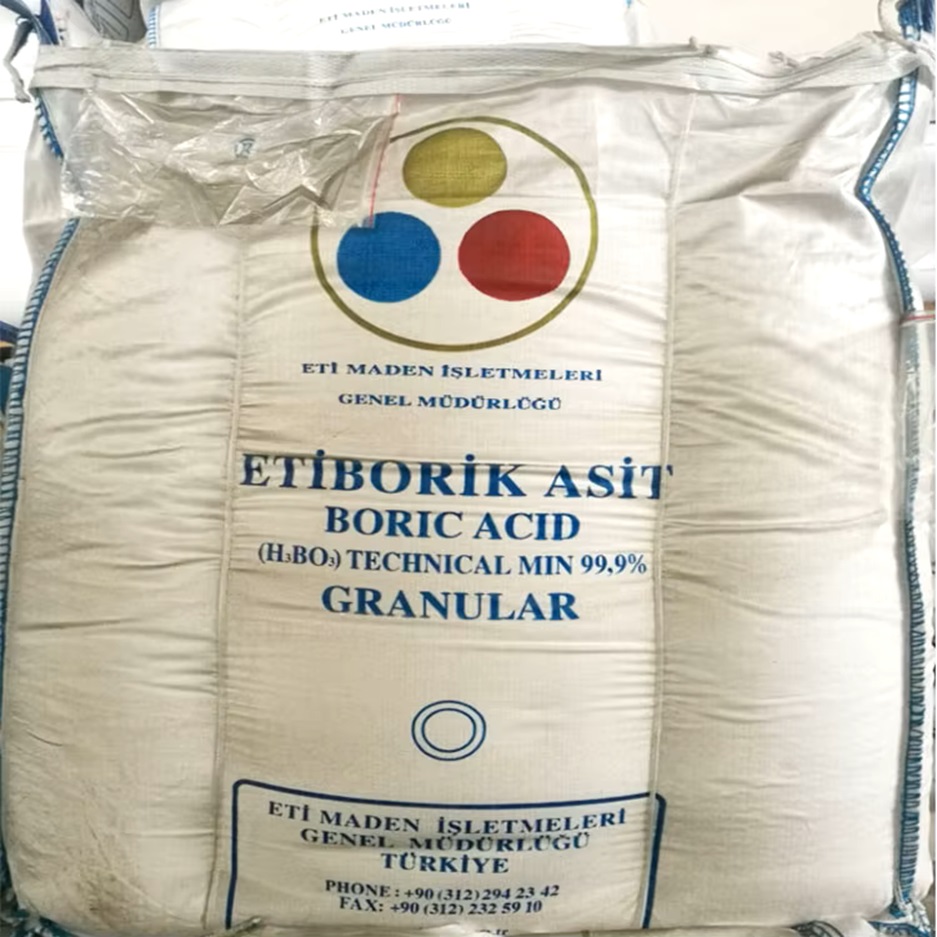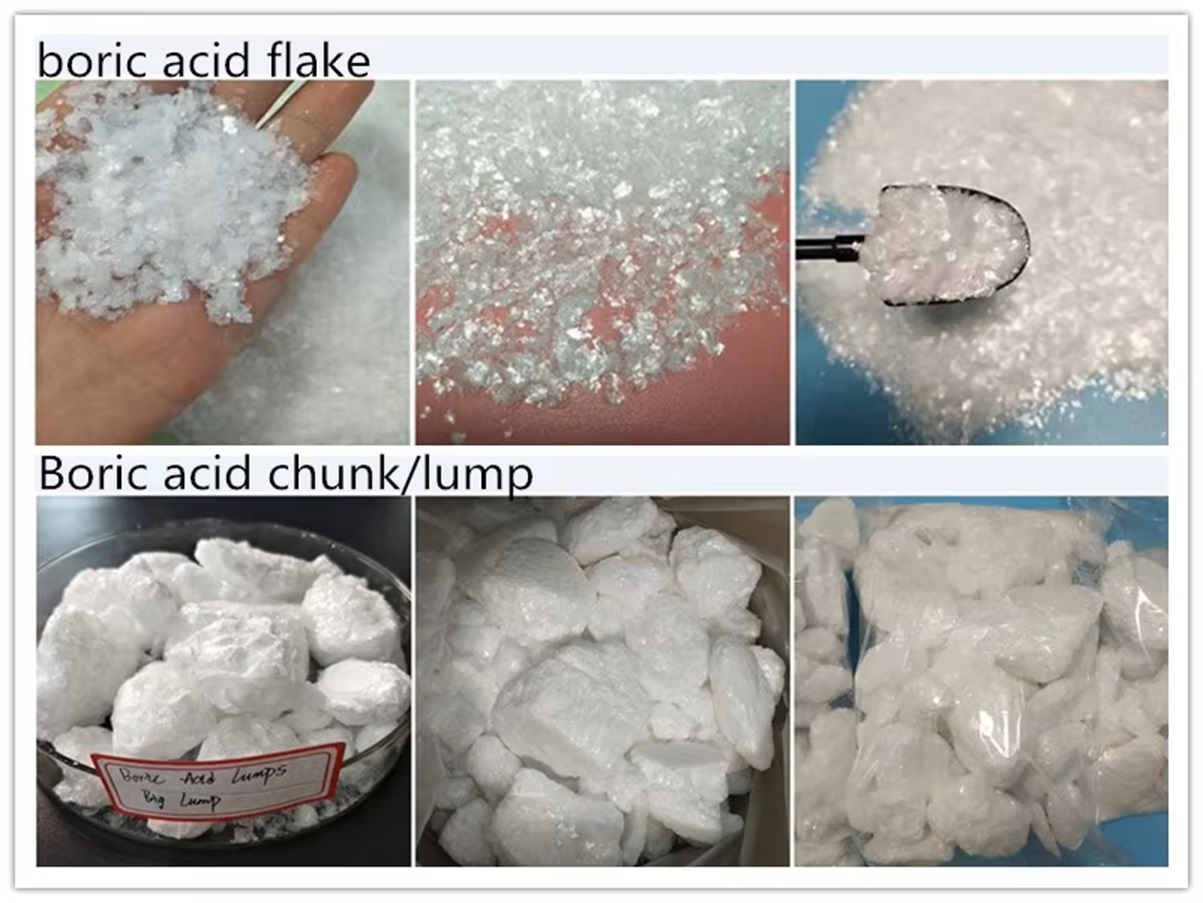We unleash your business potential by maximize the business innovation.
Send EmailBoric Acid, Orthoboric Acid, Boron acid, Boron Hydroxide, Boron Trihydroxide, Homberg Salt, 10043-35-3, 11113-50-1
Boric acid, also known as sodium borate, is a salt that is commonly found in powder or granular form. It is soluble in water and has a variety of uses. Here are some key points:
Chemical and Physical Properties
-
Chemical Formula: H₃BO₃
-
Molecular Weight: 61.83 g/mol
-
CAS Number: 10043-35-3
-
Appearance: White crystalline powder
-
Solubility: Soluble in water
Uses
-
Cleaning: Boric acid is used as a natural cleaner and is commonly found in detergents.
-
Pesticide: It can be used as an insecticide.
-
Glass and Ceramics: It is used as a component in glass, enamel, and pottery glazes.
-
Metal Processing: It is used as a flux in metal soldering.
-
Wood Preservation: It is used as a preservative against wood rot.
-
Pharmaceutical: It is used as an alkalizing agent in pharmaceuticals.
-
Chemical Laboratories: It is used as a buffering agent.
Other Names
-
Orthoboric Acid
-
Boron Hydroxide
-
Boron Trihydroxide
-
Homberg Salt
-
Eye Wash Chemical
The CAS number 11113-50-1 corresponds to Boric Acid. Here are some key points about it:
Chemical and Physical Properties
-
Chemical Formula: H₃BO₃
-
Molecular Weight: 61.83 g/mol
-
Appearance: White crystalline powder
-
Solubility: Soluble in water
Uses
-
Cleaning: Used as a natural cleaner and is commonly found in detergents.
-
Pesticide: Acts as an insecticide.
-
Glass and Ceramics: Used in the production of glass, enamel, and pottery glazes.
-
Metal Processing: Utilized as a flux in metal soldering.
-
Wood Preservation: Employed as a preservative against wood rot.
-
Pharmaceutical: Used as an alkalizing agent in pharmaceuticals.
-
Chemical Laboratories: Used as a buffering agent.
Other Names
-
Orthoboric Acid
-
Boron Hydroxide
-
Boron Trihydroxide
-
Homberg Salt
-
Eye Wash Chemical
CAS: 10043-35-3; 11113-50-1
Molecular Formula: H3BO3
Names and Identifiers
| Name | Orthoboric acid |
| Synonyms | Boric Acid TBE Buffer Boron acid Orthoboric acid Boric acid whitextl Boric acid highpurity |
| CAS | 10043-35-3 11113-50-1 |
| EINECS | 233-139-2;234-343-4 |
| InChI | InChI=1/BH3O3/c2-1(3)4/h2-4H |
Physico-chemical Properties
| Molecular Formula | H3BO3 |
| Molar Mass | 61.833 |
| Density | 1.437g/cm3 |
| Melting Point | 169℃ |
| Water Solubility | 49.5 g/L (20℃) |
| Refractive Index | 1.385 |
| Physical and Chemical Properties | White powder crystal or three oblique plane of the scale with gloss crystal. She has smooth and greasy hand and no odor. Soluble in water, alcohol, glycerin, ethers and essential oils. |
| Use | Used in glass, enamel, ceramics, medicine, metallurgy, leather, dye, pesticide, fertilizer, textile and other industries |
Risk and Safety
| Hazard Symbols | T - Toxic |
| Risk Codes | R60 - May impair fertility |
| Safety Description | S45 - In case of accident or if you feel unwell, seek medical advice immediately (show the label whenever possible.) S53 - Avoid exposure - obtain special instructions before use. |
Upstream Downstream Industry
| Raw Materials | Sulfuric acid Sulfuric acid Sodium Tetraborate Decahydrate Nitric acid Nitric acid |
| Downstream Products | Fluoroboric acid Potassium Tetrafluoroborate sodium tetrafluoroborate ammonium fluoroborate Boron nitride Sodium borohydride Potassium borohydride Boric anhydride Flame Retardant ZB Copper(II)Borofluoride Zinc tetrafluoroborate hydrate Sodium hydride Tributyl borate |
Nature
white crystalline powder or colorless microstrip pearl luster phosphor or hexagonal triclinic crystal. Tasteless, slightly sour and bitter. The melting point was about 171 °c. Soluble in water, alcohol, glycerol, ethers and essential oils, aqueous solution is weakly acidic. The solubility of boric acid in water increases with the increase of temperature, and can volatilize 0. Imol/L water solution with water vapor at pH 5.1. 19 can be dissolved in 18mL cold water, 4mL boiling water, 18mL cold alcohol, 6mL boiling alcohol or 4mL glycerol. Contact with the skin has a smooth feeling, no change in the open air. When heated to 100~105 ℃, it loses one minute of water and forms metaboric acid. When heated at 104~160 ℃ for a long time, it changes to pyroboric acid, and when heated at higher temperature, it forms anhydrous, 300 C when the formation of boric anhydride (B2 03).
Preparation Method
boric acid and ammonium nitrate were mixed, melted into a homogeneous melt, and then solidified into boron trioxide. Then, water was added to boil and dissolve, and crystallization was evaporated to obtain pure boric acid.
Standard
The content of H3B03 shall not be less than 99.5% calculated as dry product.
Trait
- This product is a colorless microstrip pearl luster crystal or white loose powder, with a smooth feeling; Odorless.
- This product is soluble in ethanol or water; Soluble in boiling water or boiling ethanol.
Use
for the preparation of buffers and various media. In the pharmaceutical, electronics, optical fiber and other fields have a wide range of applications.
Differential diagnosis
The product of the aqueous solution of borate identification reaction (General 0301).
Safety
rat oral LD50:5.14g/kg. Human skin: 15mg/3 days, intermittent exposure, moderate stimulation. Boric acid can cause skin irritation, conjunctivitis, bronchitis. Staff should do a good job of protection, if accidentally touch the skin and eyes, should immediately use plenty of water
Rinse. Store in a cool, ventilated warehouse. Keep away from fire and heat source. Should be stored separately from the alkali, potassium, not mixed storage.
Exam
acidity
take L. 0g of this product, add 30ml of water to dissolve, and then measure it according to law (General rule 0631). The pH value should be 3.5~4.8.
solution clarity and color
take this product l.Og, add 30ml of water to dissolve, and check according to law (General rule 0901, first method and general rule 0902 ) , the solution should be clear and colorless; If it is turbid, compare it with No. 1 turbidity standard solution (General rule 0902, first method), not more concentrated.
clarity of ethanol solution
take this product l.Og, add ethanol 25ml to dissolve, the solution should be clear.
chloride
take this product 0.50g, check according to law (General rule 0801), compared with the standard sodium chloride solution 5.Oml made of control solution, not more concentrated (0.01%).
sulfate
take this product 0.50g, check according to law (General rule 0802), and standard potassium sulfate solution 0.04% ML made of the control solution, should not be more concentrated ().
phosphate
take 0.50g of this product, add 15ml of water to dissolve it, add 2 drops of saturated solution of 2, 4-Dinitrophenol, add Dropwise sulfuric acid solution (12-100) until the yellow color disappears, dilute to 20ml with water, add 4ml sulfuric acid solution (12-100), 5% ammonium molybdate solution (lml) and phosphorus test solution (lml), shake well, keep the temperature in 60°C water bath for 10 minutes, if color is developed, add 0.1430G potassium dihydrogen phosphate into 1000ml measuring flask, add water to dissolve and dilute to the standard phosphate solution, shake well, take 10ml and put into 100ml measuring flask, dilute to scale with water and shake well. Each 1 ml of solution is equivalent to 10mg of P04) 0.01% ml of control solution prepared by the same method should not be deeper ().
calcium salt
take 0.50g of this product, add 10ml of water to dissolve, add ammonia test solution to make it alkaline, add 0.5ml of ammonium oxalate test solution and 5ml of ethanol, add water to 20ml, shake, if it is turbid, with standard calcium solution (precision weighing 105g of calcium carbonate dried to constant weight at 0.125°C, put it in a 500ml measuring flask, add 5ml of water and ML of hydrochloric acid to dissolve, dilute to the scale with water, shake, that's right. Each 1 ml is equivalent to 10ug of Ca) 0.01% ml of the control solution prepared by the same method should not be more concentrated ().
magnesium salt
take 0.50g of this product, add 8ml of water to dissolve, neutralize to Neutral with 8% sodium hydroxide solution, Add 10ml of water, add 5ml of 8% sodium hydroxide solution and 0.05% of 0.2 taitan yellow solution, shake well; If color is developed, mix with standard magnesium solution (accurately weigh l6.6mg of magnesium oxide burned to constant weight at 800°C, add 2.5ml of hydrochloric acid and appropriate amount of water to dissolve into 1000ml, shake well, then obtain. Each 1 ml is equivalent to 10ug of Mg) 0.01% ml of control solution prepared by the same method should not be deeper ().
Iron Salt
take l.Og of this product, add 25ml of water to dissolve, and then check according to law (General rule 0807). Compared with the control solution made of 0.001% of standard iron solution, it shall not be deeper ().
ammonium salt
take this product 2G, inspection according to law (General 0808 ) , not over 0.001%.
loss on drying
Take lg of this product, place it in a silica gel dryer for 5 hours, and lose no more than 0.5% of weight (General rule 0831).
Heavy metals
take l.Og of this product, add 23ml of water to dissolve, add acetate buffer (pH3.5 )2ml, check according to law (General rule 0821 first law), containing heavy metals not more than 10 parts per million.
arsenic salt
take 0.40g of this product, add 23ml of water to dissolve, add 5ml of hydrochloric acid, check according to law (General rule 0822 first law), should comply with the provisions (0.0005%).
Content determination
take this product O.lg, precision weighing, add 20% neutral mannitol solution (neutral to phenolphthalein indicator solution) 25ml, slightly warm to dissolve, quickly cool, add phenolphthalein indicator solution 3 drops, with sodium hydroxide titration solution (O.lmol/L) titration. Each 1 ml of sodium hydroxide titration solution (0.1 mol/l) corresponds to 6.183mg of H3B03.
Category
pharmaceutical excipients, bacteriostats and buffers.
Storage
sealed storage.








